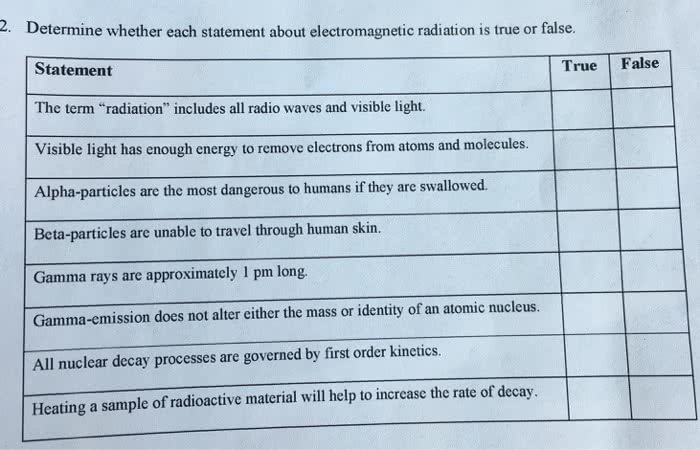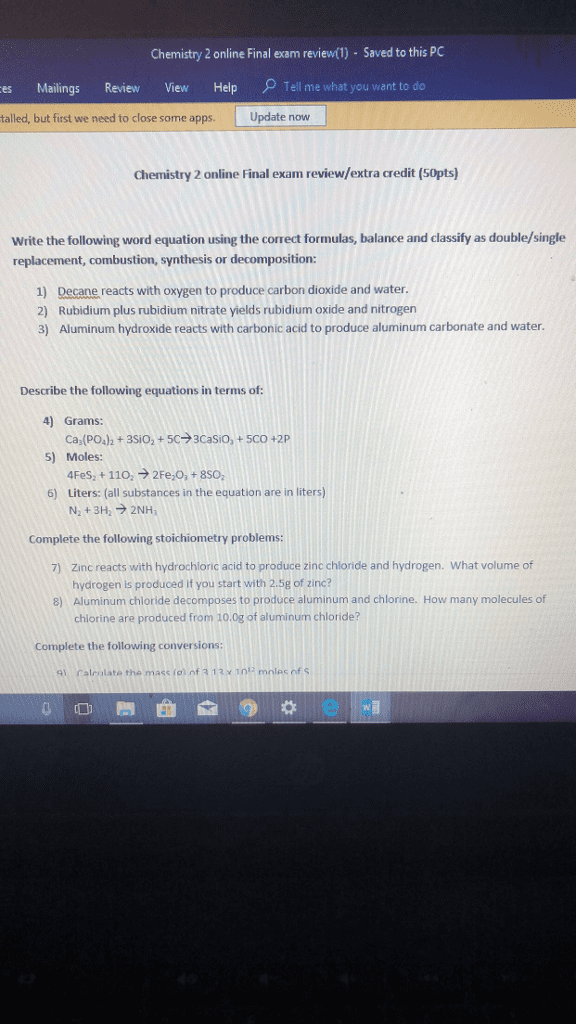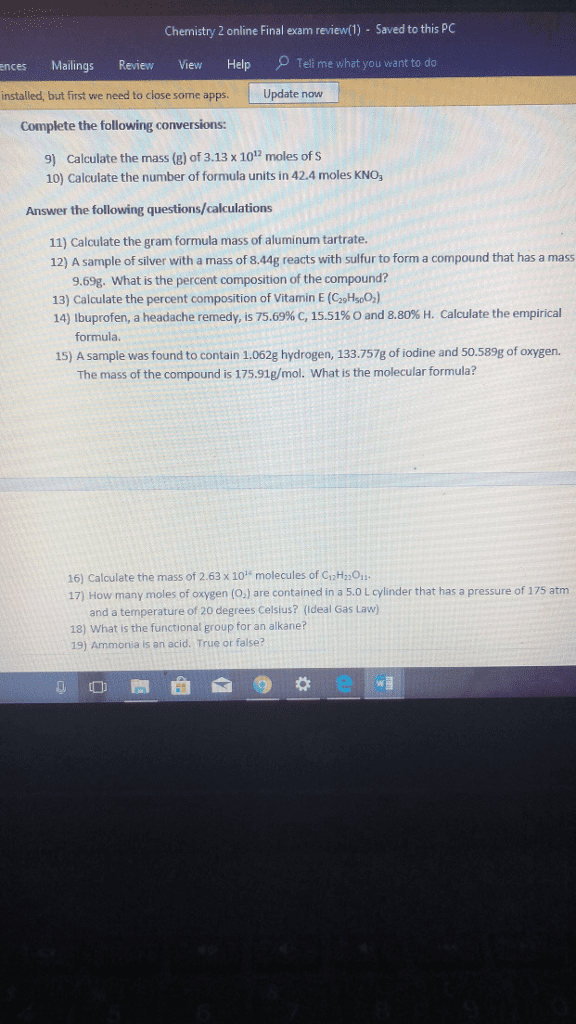01:160:161 Study Guide - Final Guide: Joule, Fiat Cr.42, Electron Capture
113 views14 pages
29 May 2019
School
Department
Course
Professor
Document Summary
Problems to prepare students for chem 162 final exam: radioactive decay particles and rays, radioactive decay kinetics, nuclear binding energy, miscellaneous, tavss, phd. Chapter 20 - the nucleus: radioactive decay particles and rays. Which type of radioactive decay results in no change in mass number or atomic number: alpha emission, gamma emission, beta emission, positron emission, electron capture. Carbon has two stable isotopes, carbon-12 and carbon-13. Carbon-11 is unstable and is most likely to undergo: alpha decay, beta decay, either positron emission or electron capture, fission, fusion. Radioactive decay particles and rays: the stable isotopes of lead are pb-204, pb-206, and pb-208. The unstable isotope pb-214 is most likely to undergo: electron capture, neutron emission, particle emission. The correct reaction is: 226: particle emission, positron emission. Radioactive decay particles and rays: which one of the following nuclear reactions is not correct, 226, 63, 11, 14, 14.
Get access
Grade+20% off
$8 USD/m$10 USD/m
Billed $96 USD annually

Homework Help
Study Guides
Textbook Solutions
Class Notes
Textbook Notes
Booster Class
40 Verified Answers



